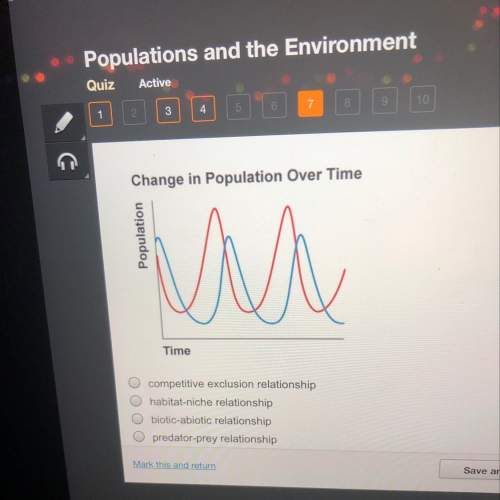
Biology, 06.05.2020 03:04 aleilyg2005
How does anaphase l in meiosis differ from anaphase in mitosis?

Answers: 3


Another question on Biology

Biology, 21.06.2019 14:20
Look at the figure above. which atmospheric layer has around 80 percent of the mass of the earth's atmosphere? (hint: it's where the clouds seen on earth are formed.) a. exosphere b. troposphere c. stratosphere d. thermosphere
Answers: 2

Biology, 22.06.2019 00:30
On a recent expedition to a remote region of northern canada, scientists uncovered skeletal remains from about 100,000 years ago. surprisingly, all the skeletal remains, which included many species from differing biological families and spanned about two thousand years, showed evidence of experiencing temperatures in excess of 1000 degrees fahrenheit (or 538 degrees celsius). which of the following, if true, best explains the apparent paradox between the cold environment and the evidence of the bones experiencing hot temperatures? (a) chemical changes that naturally occur during the process of decay in only one north canadian species produce the same evidence of the species' skeletons being exposed to hot temperatures as the expedition scientists found. (b) a little over 103,000 years ago, a large fire is known to have occurred in northern canada. (c) strong evidence exists that as early as 70,000 years ago, homo sapiens around the world relied heavily on fire to cook animals. (d) in the same expedition and in roughly the same layer of excavation, scientists found rudimentary wood cutting and hunting tools used by early humans.
Answers: 3

Biology, 22.06.2019 09:30
This is the process of making a prediction based on the results of prior observations of similar events.
Answers: 1

Biology, 22.06.2019 09:30
You have just sequenced a new protein found in mice and observe that sulfur-containing cysteine residues occur at regular intervals. what is the significance of this finding? it will be important to include cysteine in the diet of the mice. cysteine residues are required for the formation of α helices and β pleated sheets. cysteine residues are involved in disulfide bridges that form tertiary structure. cysteine causes bends, or angles, to occur in the tertiary structure of proteins.
Answers: 1
You know the right answer?
How does anaphase l in meiosis differ from anaphase in mitosis?...
Questions


Mathematics, 12.10.2020 21:01

Chemistry, 12.10.2020 21:01

English, 12.10.2020 21:01

Mathematics, 12.10.2020 21:01


Mathematics, 12.10.2020 21:01

Mathematics, 12.10.2020 21:01

Mathematics, 12.10.2020 21:01


History, 12.10.2020 21:01

English, 12.10.2020 21:01



Mathematics, 12.10.2020 21:01








